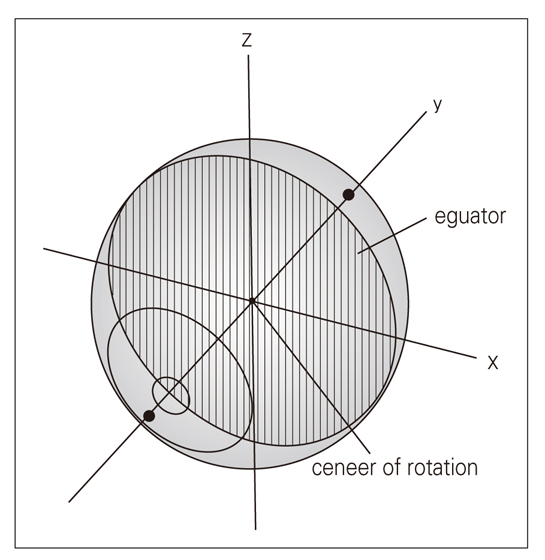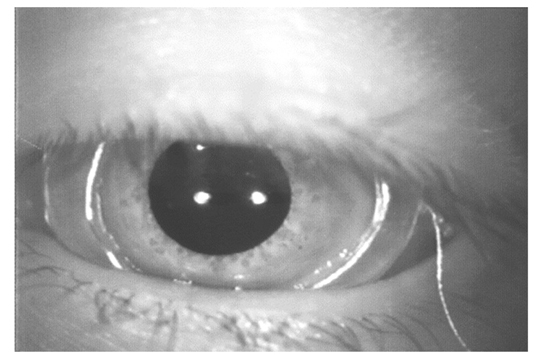J Korean Med Assoc.
2007 Apr;50(4):343-347. 10.5124/jkma.2007.50.4.343.
Eye Movements Recording with Video-oculography (VOG)
- Affiliations
-
- 1Department of Ophthalmology, Yonsei University College of Medicine, Korea. shhan222@yumc.yonsei.ac.kr
- KMID: 2184852
- DOI: http://doi.org/10.5124/jkma.2007.50.4.343
Abstract
- The measurement of eye movements in three dimensions is an important tool to investigate the human oculomotor system. When compared with the conventional electro-nystagmography (ENG) and scleral search coil system (SSCS), the video-oculography (VOG) has a higher accuracy and is a more comfortable and reliable method for the 3D-measurement of human eye movements.
MeSH Terms
Figure
Reference
-
1. Yee RD, Schiller VL, Lim V, Baloh FG, Baloh RW, Honrubia V. Velocities of vertical saccades with different eye movement recording methods. Invest Ophthalmol Vis Sci. 1985. 26:938–944.2. Dell'osso LF, Daroff RB. Tasman W, editor. Eye movement characteristics and recording techniques. Duanes Clinical Ophthalmology. 1991. 2nd ed. Philadelphia: Lippincott;14–16.3. Dell'osso LF, Daroff RB, Troost BT. Tasman W, editor. Nystagmus and saccadic intrusions and oscillations. Duane's Clinical Ophthalmology. 1991. 2nd ed. Philadelphia: Lippincott;1–3.4. Baloh RW, Sills AW, Kumley WE, Honrubia V. Quantitative measurement of saccade amplitude, duration, and velocity. Neurology. 1975. 25:1065–1070.
Article5. Baloh RW, Langhofer L, Honrubia V, Yee RD. On-line analysis of eye movements using a digital computer. Aviat Space Environ Med. 1980. 51:563–567.6. Collewijn H, van der Mark F, Jansen TC. Precise recording of human eye movements. Vision Res. 1975. 15:447–450.
Article7. Noorden GK. Binocular vision and ocular motility. 1996. 5th ed. St. Louis: Mosby;41–56.8. Imai T, Sekine K, Hattori K, Takeda N, Koizuka I, Nakamae K, Miura K, Fujioka H, Kubo T. Comparing the accuracy of video-oculography and the scleral search coil system in human eye movement analysis. Auris Nasus Larynx. 2005. 32:3–9.
Article9. Jones R. Two dimensional eye movement recording using a photo-electric matrix method. Vision Res. 1973. 13:425–431.
Article10. Yamanobe S, Taira S, Morizono T, Yagi T, Kamio T. Eye movement analysis system using computerized image recognition. Arch Otolaryngol Head Neck Surg. 1990. 116:338–341.
Article11. Han SH. Measurements of ocular saccadic velocities: computerized digital video measurement technique. J Korean Ophthalmol Soc. 1995. 36:1199–1206.12. Han SH, Yoo TW, Lee JB. Digitalized videographic measurement of strabismic angle. J Korean Ophthalmol Soc. 1998. 39:740–745.13. Han SH, Kim SG, Lee JB. Digital videographic measurement of cyclotorsional angle in normal human eye. J Korean Ophthalmol Soc. 1998. 39:1571–1577.14. Han SH, Kim SG, Lee JB, Jeong H. Eye movement recording using computer image recognition technique. J Korean Ophthalmol Soc. 2003. 44:2410–2416.15. van der Geest JN, Frens MA. Recording eye movements with video-oculography and scleral search coils: a direct comparison of two methods. J Neurosci Methods. 2002. 114:185–195.
Article16. Houben MM, Goumans J, van der Steen J. Recording three-dimensional eye movements: scleral search coils versus video oculography. Invest Ophthalmol Vis Sci. 2006. 47:179–187.
Article
- Full Text Links
- Actions
-
Cited
- CITED
-
- Close
- Share
- Similar articles
-
- Video-oculographic Analysis in Nystagmus Patients
- The Analysis of Ocular Deviations between Dominant and Non-dominant Eye Using Video-oculography in Intermittent Exotropia
- Convergence-Retraction Nystagmus: Analysis with 3-dimensional Oculography
- Voluntary Nystagmus
- Use of Video-oculography in the Diagnosis of Superior Oblique Myokymia




